Local Historic Landmarks
Landmark designation means the community recognizes a property as an important historic resource worthy of preservation. Any substantial exterior design changes to a designated landmark are subject to design review procedures of the Wilmington Historic Preservation Commission. The owner may apply for an annual deferral of fifty percent of the property taxes for as long as the property is designated and retains significance and integrity.
Apply for Landmark Designation
Cazaux-Williams-Crow House
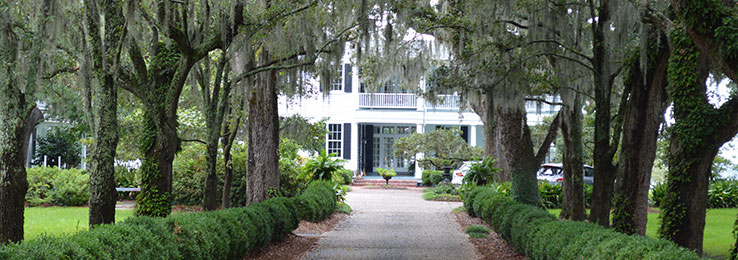
7417 Masonboro Sound Road
The 4.28 acre property was developed as a summer cottage for A.D. Cazaux to enjoy the recreational opportunities afforded by its location on the Masonboro Sound. By 1877 the property contained the main house, servants’ quarters/original kitchen, guest house, hunting lodge, dairy spring, cisterns, and a sundial. The main house is one of the oldest along the sound and represents vernacular architectural elements of the late 19th to early 20th century summer cottage architecture in Wilmington. The setting is a key feature of the site’s significance with elements such as a tree lined driveway with centuries-old live oaks draped in Spanish moss, breathtaking views of the sound, extensive grounds and marsh access, and mature landscape features. The period of significance is from 1877 to 1937.
Lazarus-Hill-Divine House
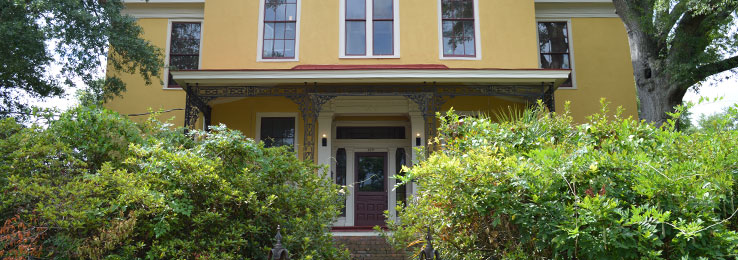
314 Grace Street
Built in 1818 for Aaron Lazarus, a wealthy merchant from Charleston, SC. The next owner, Senator Frederick Hill, sold the house to John F. Divine in 1874. Other uses include a Military Academy, Franciscan Convent and an emergency hospital. Federalist style architecture with aspects of Greek Revival and Italianate style.
Fire Station No. 5 (Former)
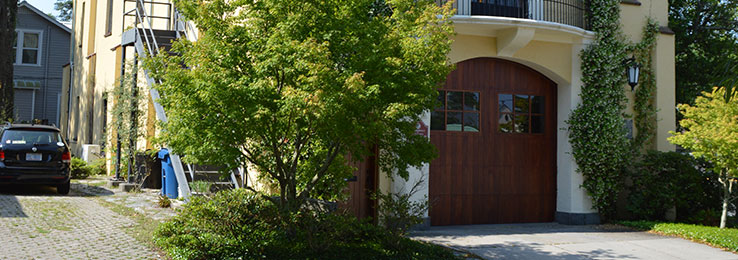
1702 Wrightsville Avenue
Built in 1931 in response to expanding city boundaries and as part of the “Build Now” campaign in an effort to relieve unemployment, while providing the city with civic improvements. The Spanish style correlates with the surrounding neighborhoods. The fire station closed 1965.
Chestnut Street Presbyterian Church (USA)
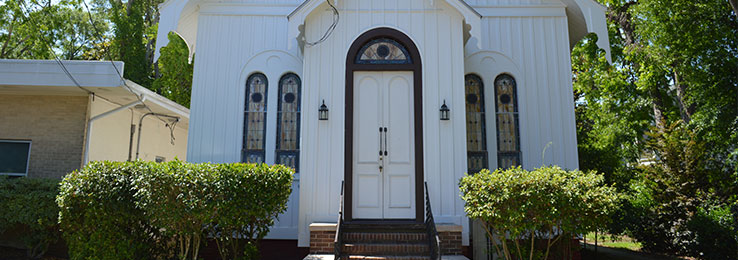
712 Chestnut Street
Constructed in 1858, the Chestnut Street Presbyterian Church is a rare example of an ecclesiastical structure built in the Carpenter Gothic style with Italianate influences. Built as a mission church by the First Presbyterian Church in 1858, the church became one of the first all black congregations in Wilmington in 1864.
Greenfield Lake Park and Gardens
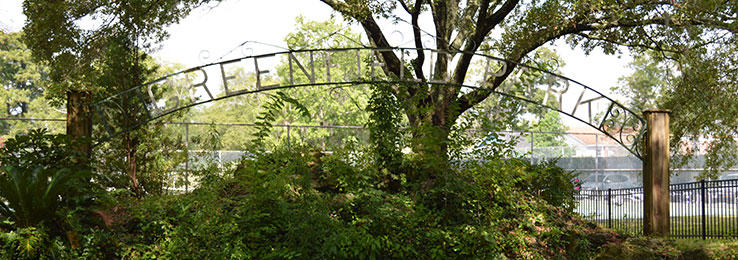
1701 & 1739 Burnett Boulevard
The lake and gardens cover over 200 acres and were part of the plantation owned by Dr. Samuel Green in the 18th century. The property was purchased by the City of Wilmington in 1925. The property boasts beautiful gardens that include Live Oak and Bald Cypress trees, fountains, goldfish ponds and walkways.
North 6th Street Truss Bridge / Harry Forden Bridge
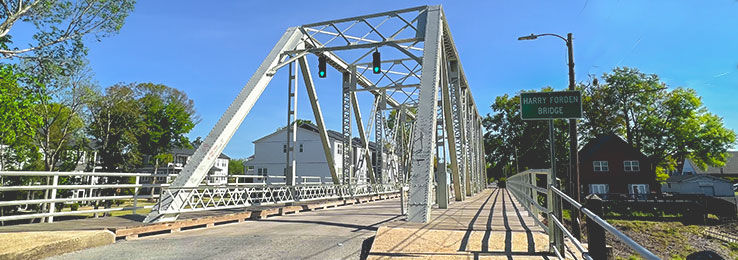
Between Brunswick and Campbell Streets
The North 6th Street Bridge was built in 1911 and is the only remaining steel truss bridge from that era in Wilmington. It was built to replace the original deteriorating wooden structure spanning the railroad tracks. In 2007 the bridge was renamed in memory of Mr. Harry Forden, a local community activist who strived to revive North 4th Street after the Atlantic Coast Line Railroad left Wilmington.
The Dr. Hubert Eaton House
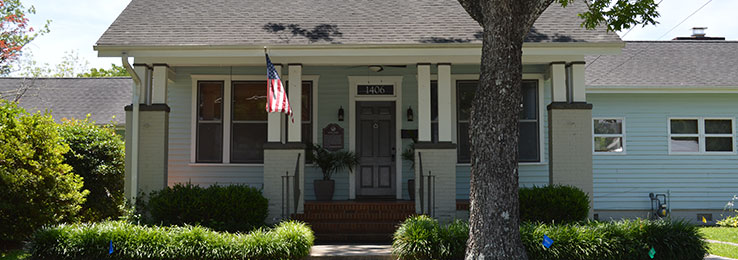
1406 Orange Street
The Dr. Hubert Eaton House was the home of Dr. Hubert Eaton, a prominent black doctor in Wilmington, was a leader in the Civil Rights movement of Wilmington, North Carolina, and the nation. Dr. Eaton was also a passionate and accomplished tennis player. He used his success and passion to train and educate Althea Gibson at his home and on his private tennis court. Ms. Gibson went on to become an international, award-winning tennis icon.
Giblem Lodge
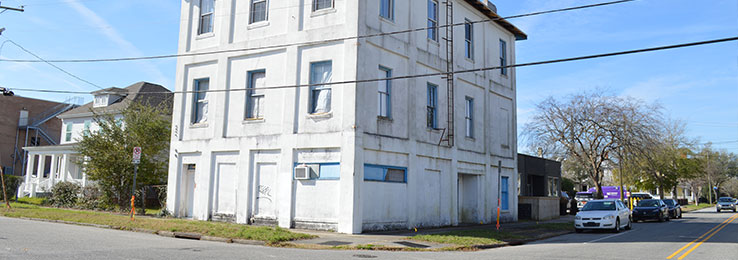
19 N 8th Street
Constructed in 1873, is the second oldest Prince Hall Masonic Lodge in North Carolina, and the oldest in Wilmington. The lodge represents the wealth, agency, independence, and resiliency of the Black population of Wilmington prior to the Civil War and well through the 21st Century. Throughout the years the Lodge has served as a community center, gathering space and safe haven for Black Wilmingtonians. The structure, as well as the people that built it, and the people that continue to maintain it, is a powerful physical reminder of resiliency, agency, and support of a community that has and continues to strive for an equal society.
Efrid's - Einstein Brother's Department Store
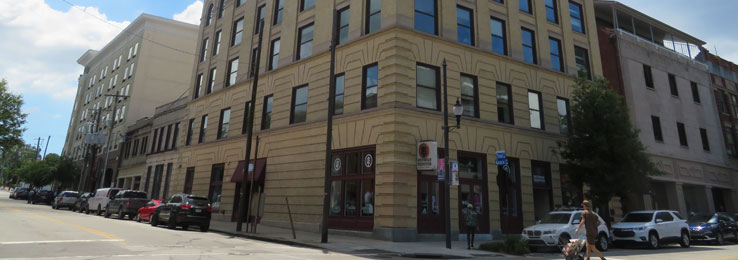
272 N Front Street
Built in 1906 with an addition in 1921 the five-story blond brick building is an outstanding example of the Renaissance Revival style in commercial architecture. Originally built for I.M. Bear and Company and later purchased by Efrid's. The open floor plan and ample light allowed space for both wholesale and retail business, providing maximum exposure of the items for sale. The original stamped tin ceiling remains on the first story showroom today.